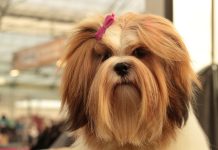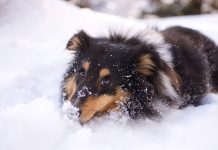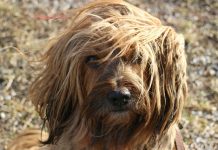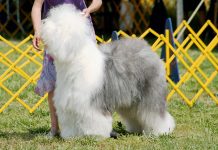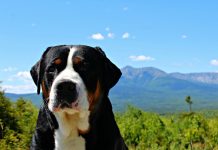History and Origins of the Tibetan Mastiff Breed
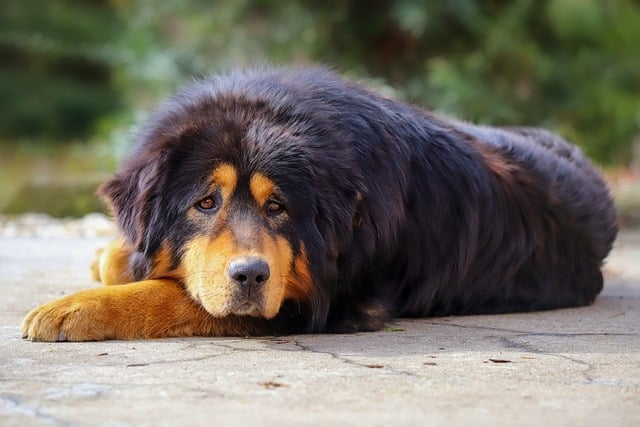
The Tibetan Mastiff is an ancient breed with a rich history and origins rooted in the Himalayan region of Tibet. Here’s an overview of its fascinating history:
- Ancient Guardians: Tibetan Mastiffs are believed to have originated thousands of years ago in the Himalayan mountains of Tibet, where they were primarily used as guardian dogs for livestock and property. They played a crucial role in protecting Tibetan monasteries, villages, and nomadic camps from predators like wolves and leopards.
- Sacred and Revered: In Tibet, the Tibetan Mastiff was highly valued and revered as a symbol of prestige and wealth. They were often given as gifts to visiting dignitaries and were regarded as sacred animals by Tibetan monks.
- Isolation in Tibet: Due to the geographical isolation of Tibet, the Tibetan Mastiff remained relatively unknown outside the region for centuries. They were selectively bred by Tibetan nomads and villagers to develop traits suited to their harsh mountainous environment.
- Introduction to the West: The Tibetan Mastiff first gained international attention in the late 19th century when explorers and travelers brought specimens back to Europe. They quickly captured the fascination of dog enthusiasts and breeders due to their impressive size, strength, and distinctive appearance.
- Recognition and Preservation: The breed was formally recognized by kennel clubs in the early 20th century, and efforts were made to preserve the breed’s unique characteristics and bloodlines. Today, Tibetan Mastiffs are cherished as loyal companions and show dogs around the world.
Physical Characteristics and Appearance of Tibetan Mastiffs
The Tibetan Mastiff is a large and powerful dog known for its imposing stature and majestic presence. Here are the key physical characteristics and appearance traits of the breed:
- Size: Tibetan Mastiffs are one of the largest and heaviest dog breeds, with males typically standing between 25 to 28 inches (63 to 71 cm) at the shoulder and weighing 90 to 150 pounds (41 to 68 kg). Females are slightly smaller but still substantial in size.
- Build: The Tibetan Mastiff has a strong and muscular build with a broad chest, sturdy limbs, and a robust frame. They are well-balanced and have a powerful, intimidating presence.
- Head: The breed’s head is large and broad, with a strong, square muzzle. They have a distinctive mane of fur around the neck, giving them a lion-like appearance.
- Eyes: Tibetan Mastiffs have medium-sized, almond-shaped eyes that are deep-set and expressive. The eye color can range from dark brown to amber.
- Ears: The ears of Tibetan Mastiffs are medium-sized, V-shaped, and pendant (hanging down). They are set high on the head and are covered with thick fur.
- Coat: The breed has a dense, double-layered coat that provides insulation against extreme cold temperatures. The outer coat is thick, coarse, and straight, while the undercoat is soft and woolly. Tibetan Mastiffs come in various colors, including black, brown, blue-gray, and gold, often with white markings on the chest and feet.
- Tail: The tail of a Tibetan Mastiff is long and bushy, carried curled over the back. The tail is an important feature of the breed’s appearance and helps protect against harsh weather conditions.
- Gait: Tibetan Mastiffs move with a deliberate and powerful gait. Despite their size, they are agile and capable of covering rough terrain with ease.
- Expression: Tibetan Mastiffs have a noble and aloof expression, reflecting their independence and protective nature. They are known for their calm demeanor and watchful attitude.
- Overall Impression: The overall impression of a Tibetan Mastiff is that of a majestic, ancient guardian breed with a dignified and imposing presence. They exude confidence and strength while remaining loyal and devoted to their families.
Tibetan Mastiffs require proper care, training, and socialization to thrive as well-rounded companions. They are known for their intelligence, independence, and strong protective instincts, making them suitable for experienced dog owners who understand their unique needs and characteristics.
Tibetan Mastiff Temperament and Personality Traits
- Loyal and Protective: Tibetan Mastiffs are fiercely loyal and protective of their families and territories. They have a strong instinct to guard and will act fearlessly in defense of their loved ones.
- Independent Thinkers: This breed is known for its independence and intelligence. Tibetan Mastiffs can be stubborn and may require patient, consistent training.
- Alert and Watchful: They are naturally alert and vigilant, making them excellent watchdogs. Tibetan Mastiffs are keen observers of their surroundings and will alert their owners to potential threats.
- Reserved with Strangers: Tibetan Mastiffs are typically reserved and aloof around strangers. Early socialization is crucial to ensure they remain confident and well-mannered in different situations.
- Gentle and Affectionate: Despite their imposing size and protective nature, Tibetan Mastiffs are gentle and affectionate with their families. They form strong bonds with their owners and enjoy companionship.
- Calm Demeanor: As adults, Tibetan Mastiffs are generally calm and composed. They are not overly active or hyperactive but require regular exercise to stay healthy.
- Strong-Willed: Tibetan Mastiffs can be strong-willed and may challenge authority if not properly trained. Consistent leadership and positive reinforcement are important for managing their behavior.
- Good with Children: When raised with children and properly socialized, Tibetan Mastiffs can be gentle and patient companions for kids. However, supervision is always recommended due to their size and protective instincts.
- Territorial Instincts: This breed has a strong territorial instinct and may be wary of unfamiliar people or animals entering their space. Early socialization can help them differentiate between friends and potential threats.
- Low Barking Tendency: Tibetan Mastiffs are not excessive barkers but will vocalize to alert their owners. They have a deep, impressive bark that commands attention.
Training and Socialization Needs for Tibetan Mastiffs
- Early Socialization: Start socializing your Tibetan Mastiff puppy from a young age to expose them to different people, animals, and environments. This helps prevent shyness or fearfulness in adulthood.
- Positive Reinforcement: Use positive reinforcement techniques such as treats, praise, and play to motivate and reward good behavior. Avoid harsh methods that may cause fear or resistance.
- Consistent Leadership: Establish yourself as a calm, confident leader through consistent training and clear boundaries. Tibetan Mastiffs respond well to confident, assertive leadership.
- Obedience Training: Teach basic obedience commands such as sit, stay, come, and heel. Be patient and consistent, as Tibetan Mastiffs may take longer to respond than some breeds.
- Guard Dog Training: Harness their natural guarding instincts through appropriate training. Teach them to distinguish between welcome visitors and intruders and provide positive reinforcement for appropriate behavior.
- Exercise Requirements: While not excessively active, Tibetan Mastiffs benefit from regular exercise to maintain muscle tone and mental stimulation. Daily walks and play sessions are recommended.
- Crate Training: Introduce crate training early to provide a safe space for your Tibetan Mastiff and prevent destructive behavior when unsupervised.
- Patience and Persistence: Training a Tibetan Mastiff requires patience, persistence, and a gentle approach. They respond best to positive, reward-based training methods.
- Behavioral Consistency: Establish consistent rules and routines for your Tibetan Mastiff to promote good behavior and prevent undesirable habits from forming.
- Professional Guidance: Consider working with a professional dog trainer or behaviorist experienced with large guardian breeds if you encounter challenges in training your Tibetan Mastiff.
By understanding the unique temperament and training needs of Tibetan Mastiffs, you can develop a strong bond with your dog and ensure they become well-mannered, confident companions. Consistent training, socialization, and positive reinforcement are key to raising a happy and well-adjusted Tibetan Mastiff.
Health Considerations and Common Issues in Tibetan Mastiffs
Tibetan Mastiffs are generally a healthy and robust breed, but like all dogs, they can be prone to certain health conditions. Responsible breeding practices and proactive veterinary care are essential for maintaining the health and well-being of Tibetan Mastiffs. Here are common health considerations and issues to be aware of:
- Hip Dysplasia: A common orthopedic condition in large breeds, hip dysplasia occurs when the hip joint doesn’t develop properly, leading to arthritis and mobility issues. Regular hip evaluations are important for early detection.
- Elbow Dysplasia: Similar to hip dysplasia, elbow dysplasia affects the elbow joint and can cause lameness, pain, and arthritis. Elbow evaluations are recommended, especially for breeding dogs.
- Gastric Dilatation-Volvulus (GDV): Also known as bloat, GDV is a life-threatening condition where the stomach fills with gas and twists. This can occur suddenly and requires immediate veterinary intervention. Symptoms include restlessness, bloating of the abdomen, unproductive vomiting, and weakness.
- Entropion and Ectropion: Tibetan Mastiffs may be prone to eyelid abnormalities such as entropion (inward rolling of the eyelid) and ectropion (outward rolling of the eyelid), which can cause irritation and require corrective surgery.
- Progressive Retinal Atrophy (PRA): PRA is a degenerative eye disorder that can lead to vision loss over time. Regular eye exams are recommended to monitor for signs of PRA.
- Hypothyroidism: Some Tibetan Mastiffs may develop hypothyroidism, a condition where the thyroid gland does not produce enough hormones, leading to symptoms such as weight gain, lethargy, and skin issues.
- Autoimmune Disorders: Certain autoimmune disorders, such as autoimmune hemolytic anemia (AIHA) or immune-mediated polyarthritis, may occur in Tibetan Mastiffs. Early detection and management are crucial for these conditions.
- Skin Issues: Tibetan Mastiffs may experience skin problems such as allergies, hot spots, and infections. Regular grooming and proper nutrition can help prevent and manage skin issues.
- Heart Conditions: Some Tibetan Mastiffs may be predisposed to cardiac issues such as dilated cardiomyopathy (enlarged heart) or subaortic stenosis (narrowing of the heart’s outflow tract). Regular cardiac evaluations are important for early detection and management.
- Obesity: Due to their size and tendency to be less active, Tibetan Mastiffs are prone to obesity. Proper diet and regular exercise are essential for maintaining a healthy weight.
Living with a Tibetan Mastiff: Suitable Environments and Lifestyle Considerations
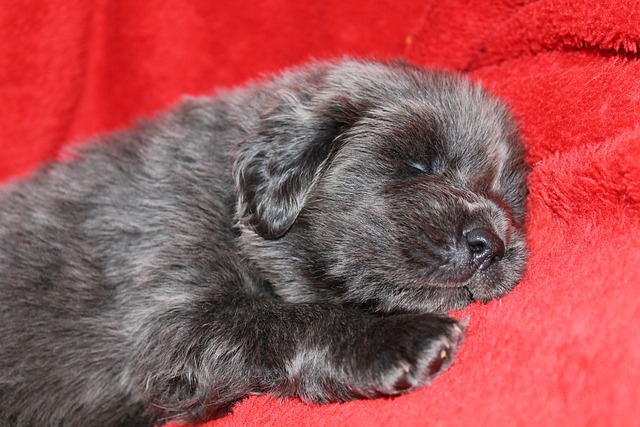
Tibetan Mastiffs are large, powerful dogs with unique needs and characteristics. Providing them with a suitable environment and lifestyle is important for their well-being and happiness. Here are considerations for living with a Tibetan Mastiff:
- Space: Tibetan Mastiffs require ample indoor space and a secure, fenced yard where they can move around comfortably. They are not well-suited to apartment living due to their size and exercise needs.
- Climate: Consider the climate when owning a Tibetan Mastiff. They have a thick double coat that provides insulation, but they may struggle in extremely hot or humid conditions. Access to shade and cool areas is essential.
- Exercise Requirements: While Tibetan Mastiffs are not overly active, they benefit from regular exercise to stay healthy and mentally stimulated. Daily walks and play sessions are recommended.
- Socialization: Early and ongoing socialization is important to help Tibetan Mastiffs become well-adjusted adults. Expose them to different people, animals, and environments to prevent shyness or fearfulness.
- Training: Tibetan Mastiffs are intelligent but can be independent thinkers. Start training early using positive reinforcement techniques to establish boundaries and good behavior.
- Grooming: Their dense coat requires regular grooming to prevent matting and reduce shedding. Brush them several times a week and bathe them as needed.
- Health Care: Schedule regular veterinary check-ups, vaccinations, and preventive care to monitor your Tibetan Mastiff’s health and address any potential issues early.
- Safety Precautions: Due to their protective instincts, Tibetan Mastiffs should be supervised around strangers and introduced to visitors gradually. Properly socialize them to differentiate between welcome guests and potential threats.
- Nutrition: Feed your Tibetan Mastiff a high-quality diet appropriate for their age, size, and activity level. Avoid overfeeding to prevent obesity and related health problems.
- Companionship: Tibetan Mastiffs thrive on companionship and enjoy being part of the family. Spend quality time with them and provide plenty of affection and attention.
By understanding the health considerations and lifestyle needs of Tibetan Mastiffs, you can provide them with a happy, healthy, and fulfilling life. Responsible ownership, proper care, and attentive management are key to ensuring that your Tibetan Mastiff remains a cherished member of the family for years to come.
Tibetan Mastiff Variations and Breeding Practices
Tibetan Mastiffs are a unique and ancient breed with distinct variations and breeding practices aimed at preserving their traditional characteristics and health. Here’s an overview of Tibetan Mastiff variations and responsible breeding practices:
Variations in Tibetan Mastiffs:
- Regional Variations: Tibetan Mastiffs can exhibit regional variations based on their geographical origins within Tibet and surrounding areas. Different regions may have slightly different physical features and coat types.
- Coat Colors: Tibetan Mastiffs come in various coat colors, including black, brown, gold, blue-gray, and red. Some may have white markings on the chest and feet. Coat color variations can occur within the breed.
- Size: Tibetan Mastiffs can vary in size, with males typically ranging from 24 to 26 inches (61 to 66 cm) in height and weighing 90 to 150 pounds (41 to 68 kg). Females are generally slightly smaller but still substantial in size.
- Conformation: There can be variations in conformation within the breed, including differences in head shape, ear set, and overall body proportions. Responsible breeders aim to adhere to the breed standard while preserving the breed’s unique characteristics.
Breeding Practices for Tibetan Mastiffs:
- Health Testing: Responsible breeders prioritize the health and well-being of Tibetan Mastiffs by conducting health screenings for genetic disorders such as hip dysplasia, elbow dysplasia, and cardiac issues. Screening breeding dogs helps reduce the risk of passing on hereditary health problems to offspring.
- Preservation of Breed Characteristics: Ethical breeders focus on preserving the traditional characteristics of Tibetan Mastiffs, including their protective nature, intelligence, and unique appearance. They aim to produce puppies that reflect the breed standard set by kennel clubs and breed organizations.
- Selection of Breeding Stock: Breeders carefully select breeding stock based on health, temperament, conformation, and genetic diversity. They may work with experienced veterinarians and canine geneticists to make informed breeding decisions.
- Socialization and Early Handling: Responsible breeders prioritize early socialization and handling of puppies to ensure they grow up to be well-adjusted and confident adults. Early exposure to different people, animals, and environments helps puppies develop into balanced individuals.
- Ethical Placement of Puppies: Reputable breeders prioritize the well-being of their puppies and carefully screen potential owners to ensure they can provide a suitable home. They educate puppy buyers about the breed’s needs and characteristics.
- Continued Education and Improvement: Dedicated Tibetan Mastiff breeders are committed to ongoing education and improvement. They stay updated on the latest research, health trends, and advancements in canine genetics to contribute positively to the breed’s future.
- Ethical Marketing and Transparency: Responsible breeders are transparent about their breeding practices and provide documentation of health screenings, pedigrees, and genetic testing to puppy buyers. They prioritize the long-term health and welfare of the breed.
By supporting responsible breeding practices and working with reputable Tibetan Mastiff breeders, enthusiasts can help preserve the breed’s heritage and ensure the health and well-being of future generations of Tibetan Mastiffs. Ethical breeding practices contribute to the longevity and sustainability of the breed while promoting responsible pet ownership.
50 Best Names with Meanings for Tibetan Mastiffs
Naming your Tibetan Mastiff can be a meaningful and enjoyable process. Here are 50 best names with meanings that suit the majestic and noble nature of this ancient breed:
- Khan – Ruler or king
- Serenity – Calm and peaceful
- Raja – King or prince
- Luna – Moon, serene and beautiful
- Rex – Latin for king, fitting for a regal breed
- Arya – Noble, great for a courageous dog
- Tundra – Vast, open landscape
- Odin – Norse god of wisdom and war
- Zephyr – Gentle breeze
- Sasha – Defender of mankind
- Titan – Giant, reflecting their size and strength
- Esprit – Spirit or vitality
- Rogue – Bold and adventurous
- Kai – Strong and unbreakable
- Valkyrie – Norse female warrior
- Juno – Roman goddess of protection
- Blaze – Bright and intense, perfect for a fiery personality
- Zen – Tranquility and peace
- Cyrus – Sun, symbolizing warmth and strength
- Nova – New and brilliant
- Ragnar – Warrior or hero
- Mystique – Mysterious and intriguing
- Astra – Star, representing brightness and guidance
- Onyx – Black gemstone, ideal for a dark-coated Mastiff
- Loki – Norse trickster god, mischievous and clever
- Echo – Reflection or reverberation
- Magna – Great and powerful
- Athena – Greek goddess of wisdom and courage
- Typhoon – Strong and powerful storm
- Zara – Princess, elegant and regal
- Brutus – Strong and fierce
- Nyx – Greek goddess of the night, mysterious and powerful
- Hunter – Skilled and alert
- Luna – Moon, representing beauty and grace
- Rogue – Bold and adventurous
- Zephyr – Gentle breeze
- Koda – Friend, perfect for a loyal companion
- Astra – Star, symbolizing brightness and guidance
- Zara – Princess, elegant and regal
- Sable – Dark and dignified coat color
- Echo – Reflection or reverberation
- Jax – God has been gracious, a powerful name
- Harley – From the meadow of the hares, playful
- Pharaoh – King of ancient Egypt, majestic and commanding
- Indigo – Deep blue hue, ideal for a blue-gray Mastiff
- Maverick – Independent and bold
- Stella – Star, shining and radiant
- Bruno – Brown-haired, suitable for a Mastiff with brown markings
- Venus – Roman goddess of love and beauty
- Ivan – Gift of God, reflecting their importance and presence
Choose a name that resonates with your Tibetan Mastiff’s personality, appearance, and the qualities you admire. Whether you prefer a strong and powerful name or a more elegant and meaningful name, there’s a perfect fit waiting for your majestic companion!
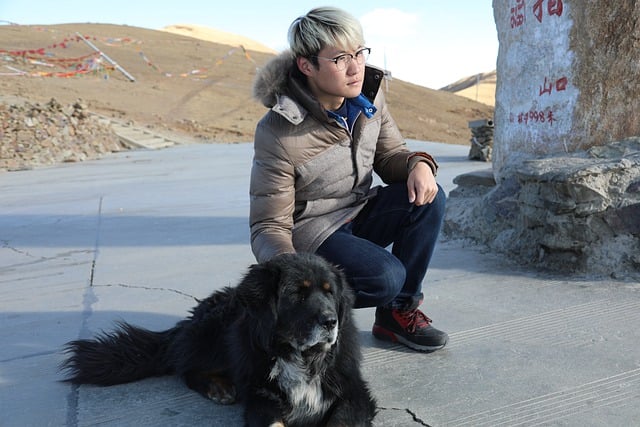
In conclusion, this comprehensive guide to Tibetan Mastiff dogs has provided a detailed exploration of this magnificent and unique breed. Throughout our discussion, we’ve delved into the history, distinctive characteristics, and essential care considerations that define Tibetan Mastiffs. Known for their majestic appearance, independent nature, and loyalty, Tibetan Mastiffs make exceptional companions for experienced dog owners seeking a devoted and protective pet. They require proper training, socialization, and regular exercise to thrive as well-rounded companions. As you embark on your journey with a Tibetan Mastiff, may you appreciate their unique qualities and form a strong bond with this remarkable breed, creating lasting companionship and fulfillment together.












